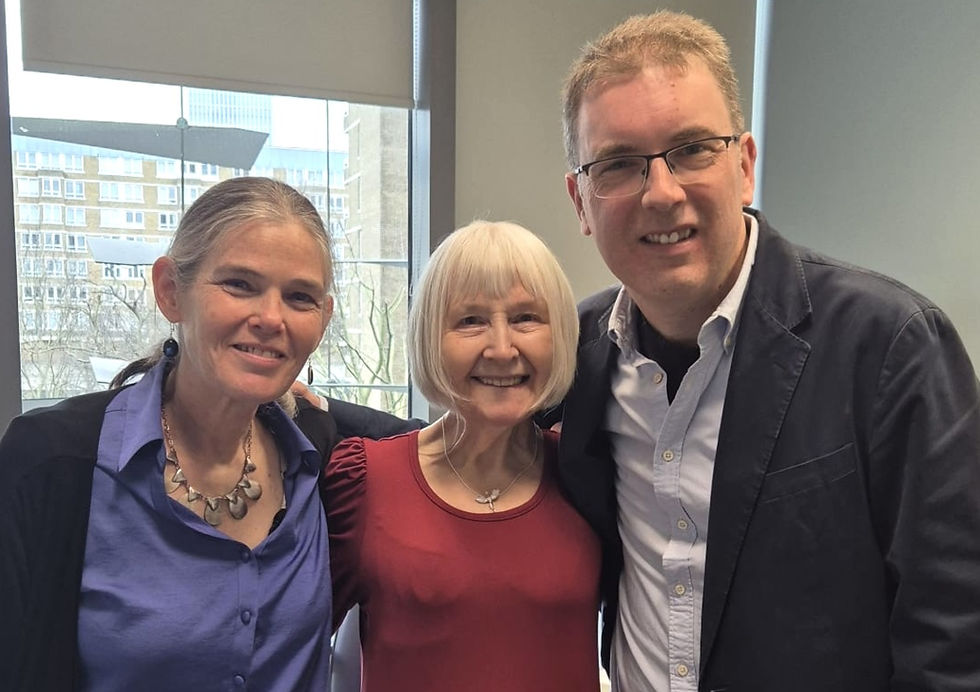AI detects eye changes that lead to sight loss in young people
- INSIGHT communications team
- Sep 18, 2025
- 3 min read
Use of Artificial Intelligence (AI) can accurately predict when young people with the sight-threatening eye condition kerataconus need treatment to stabilise the cornea and prevent loss of vision.
Developed by researchers at Moorfields Eye Hospital and UCL Institute of Ophthalmology, the AI model could help doctors manage patients with kerataconus more precisely, reducing unnecessary follow-up for patients at low risk of progression while ensuring priority intervention for those at high risk.
Kerataconus affects around 1 in 350 people, most commonly developing in teenagers and young adults, and worsening as they get older. In people with kerataconus, the cornea — the protective layer at the front of the eye — bulges outwards and becomes thinner, leading to distorted vision. This can be managed by wearing glasses or contact lenses to improve vision.
If the condition progresses, and is detected in time, ophthalmologists can give a treatment called cross-linking, which avoids the need for invasive corneal transplant surgery. Cross-linking involves vitamin B2 eye drops and exposure to UV light to stiffen the cornea, preventing vision loss in more than 95% of cases. However, it is difficult to predict exactly when the cross-linking intervention is needed, other than through regular monitoring appointments when an Optical Coherence Tomography (OCT) scan is taken to assess the cornea.

Lead researcher Shafi Balal said: “Our research shows that we can use AI to predict which patients need treatment and which can continue with monitoring. This is the first study of its kind to obtain this level of accuracy in predicting the risk of keratoconus progression using anonymised patient data, including OCT scans.”
The AI model analysed 36,673 OCT eye images linked to clinical records from 6,684 patients with keratoconus attending routine appointments at Moorfields. The algorithm accurately sorted up to 90% of patients into two groups: those at high risk who needed imminent cross-linking treatment, and those at low risk who did not need treatment.
The findings, presented at the 43rd Congress of the European Society of Cataract and Refractive Surgeons, demonstrate the value of routinely collected data in improving clinical care.
Data for the study was curated by the INSIGHT Health Data Research Hub at Moorfields, as part of a data pipeline relating to corneal conditions that has been developed for healthcare research. Analysis was carried out in INSIGHT’s Secure Research Environment, enabling secure access to anonymised datasets.

As a next step, researchers at Moorfields and UCL will explore how the model performs when compared with clinicians in assessing eye scans. They are also developing a world-first AI foundation model, KeraFOUND, for conditions affecting the anterior segment — the front of the eye. Trained on 1.75 million eye images curated through INSIGHT, the model is designed to be adaptable for specific tasks such as predicting and managing keratoconus progression, eye infections and inherited eye diseases.
The research team also plan to investigate how the model performs on Oculomics tasks—using biomarkers in the eye to detect systemic conditions—including early prediction of heart attacks, strokes and inflammation. The work is supported by funding from the National Institute for Health and Research and Moorfields Eye Charity.
For more information, please contact us: enquiries@insight.hdrhub.org



